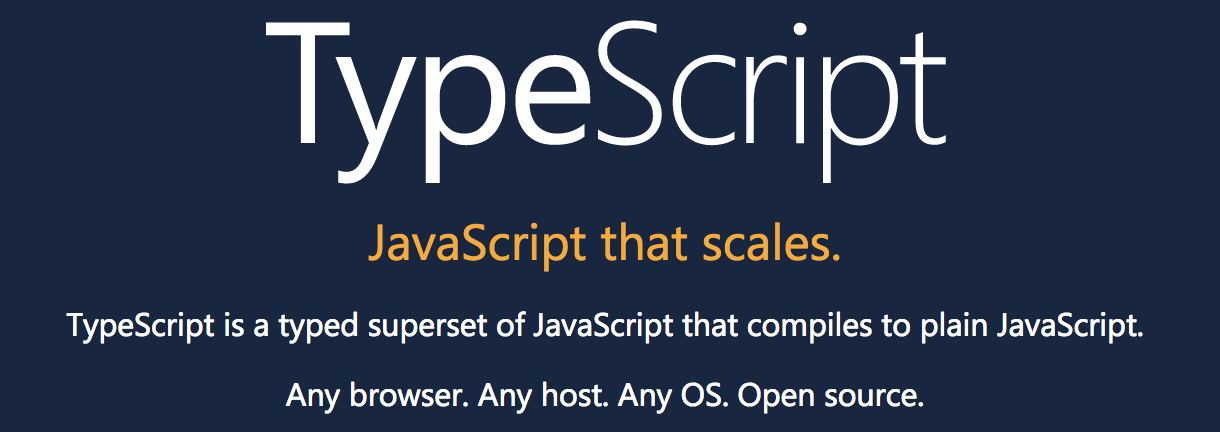Typing
rawpixel (Public Domain)Table of Contents
- Preface
- Introduction
- Packaging
- Where to Start Packaging
- Anatomy of a Package
- Publishing Packages
- Building Packages
- Standalone Builds
- Managing Dependencies
- Code Quality
- Linting
- Code Formatting
- Typing
- Testing
- Infrastructure
- Processes
- Continuous Integration
- Automation
- Documentation
- README
- Change Logs
- Site
- API Documentation
- Other Types of Documentation
- Linting and Formatting
- Future
- Longevity
- Marketing
- Appendices
- Managing Packages Using a Monorepo
- Customizing ESLint
Nhost - Backend-as-a-Service with GraphQL for modern app development - Interview with Johan Eliasson
A function interface is a contract and depending on the system, it gives you guarantees. JavaScript doesn’t give any guarantees by default and you can pass anything to a function. Doing this may lead to a runtime error and crash your application. In a stricter system it’s difficult, or even impossible, to do this.
The Value of Typing#
A loose typing system, such as the one included in JavaScript, doesn’t get in your way. But what if you know the types and want to communicate them? You could include rough checks by programming them but this cannot match proper type systems and tooling cannot use the information in any meaningful way.
Once you can communicate types on language level, you will get at least the following benefits:
- If you know a type, you can communicate it using the language itself.
- If the type information is available, then the editors can use it for features like auto-completion and refactoring functionality.
- The available type information can be used for techniques such as property based testing and documentation.
- In an interpreted language, the interpreter can use the information to speed up execution of code.
Flow#

Flow type checker by Facebook is an example of a tool that builds on top of JavaScript. To give you an example, consider the following add function that has been annotated using Flow:
// @flow
function add(x: number, y: number): number {
return x + y;
}
The definition states that add should receive two numbers and return one as a result. This is the way it’s usually done in statically typed languages.
Flow relies on a static type checker installed separately. As you run the tool, it will evaluate your code and provide recommendations. To ease development, babel-plugin-typecheck allows you to evaluate Flow types during runtime.
babel-plugin-flow-react-proptypes allows you to generate propTypes using Flow definitions. It brings the two ideas together.flow-coverage-report allows you to track the Flow typing coverage of your system. The idea is similar as for test coverage.
See Try Flow for more concrete examples.
TypeScript#

TypeScript by Microsoft is an entire language that comes with a typing approach of its own. It’s a superset of JavaScript and it has been adopted especially by the AngularJS community.
The Flow example above works even in TypeScript. Even though there are similarities like this, the approaches differ and provide different sets of functionality. The Flow and TypeScript comparison by Bazyli Brzóska highlights these differences.
See TypeScript playground for more concrete examples.
The Benefits of Flow and TypeScript#
Both Flow and TypeScript compiler can detect a variety of type related problems. This doesn’t mean code won’t crash runtime but at least you’ll detect type related mismatches early. A large part of TypeScript’s value has to do with the way it has been integrated to popular editors. The same applies to Flow in a more limited extent.
Type Definitions#
To get value of these systems, you have to use type definitions with existing packages. flow-typed provides them for Flow while DefinitelyTyped achieves the same for TypeScript.
These third-party type definitions complement the actual packages and allow you to capture type errors related to them. It can be sensible to implement a package using either and then compile to JavaScript and a type definition file.
Generating Type Definitions#
If you are using TypeScript to author your packages, TypeScript compiler will write file ending in d.ts. The file contains the type definitions. It’s advisable to set "typings": "dist/library.d.ts" in package.json although TypeScript related tooling will look for the file through convention. The same type definition can be used for DefinitelyTyped.
TypeScript documentation covers related details in further detail.
Flow provides flow gen-flow-files <input file> > <output file> that achieves closely the same. It accepts a source file to process and emits the extracted type definition. These definitions could then be submitted to flow-typed.
Patrick Stapfer has written an article that covers Flow specifics in greater detail.
Challenges of Typing#
Even though typing can provide value, there are challenges involved. As the tooling evolves, their semantics may change. What if a package has been typed using an older version of Flow than the one you are using and it broke in the process? What if you are using a different version of a dependency than one of your dependencies? Which typings to use then?
It’s possible to overcome some of these problems in user level as you can override typings yourself. Typing doesn’t come without a cost as now you have a new source of potential problems. But if the potential benefits are greater than potential problems, there’s value in typing.
ReasonML implements a bridge between the language and JavaScript using a programmable type definition. The approach goes further than the static definitions provided by Flow and TypeScript.
Conclusion#
It can be a good idea for a package author to consider using a type system as it allows stricter contracts. This in turn is a nice for the consumers as they will capture potential type related errors earlier.
You’ll learn about testing in the next chapter.
This book is available through Leanpub. By purchasing the book you support the development of further content.